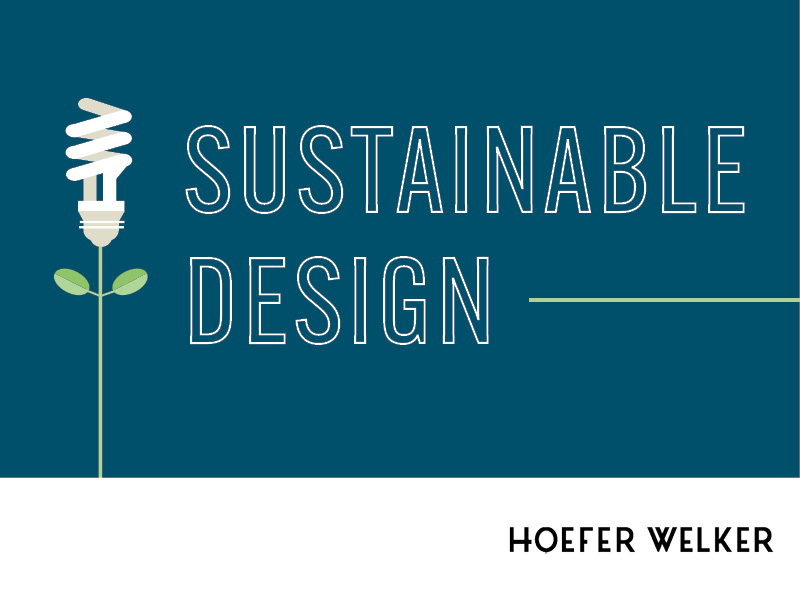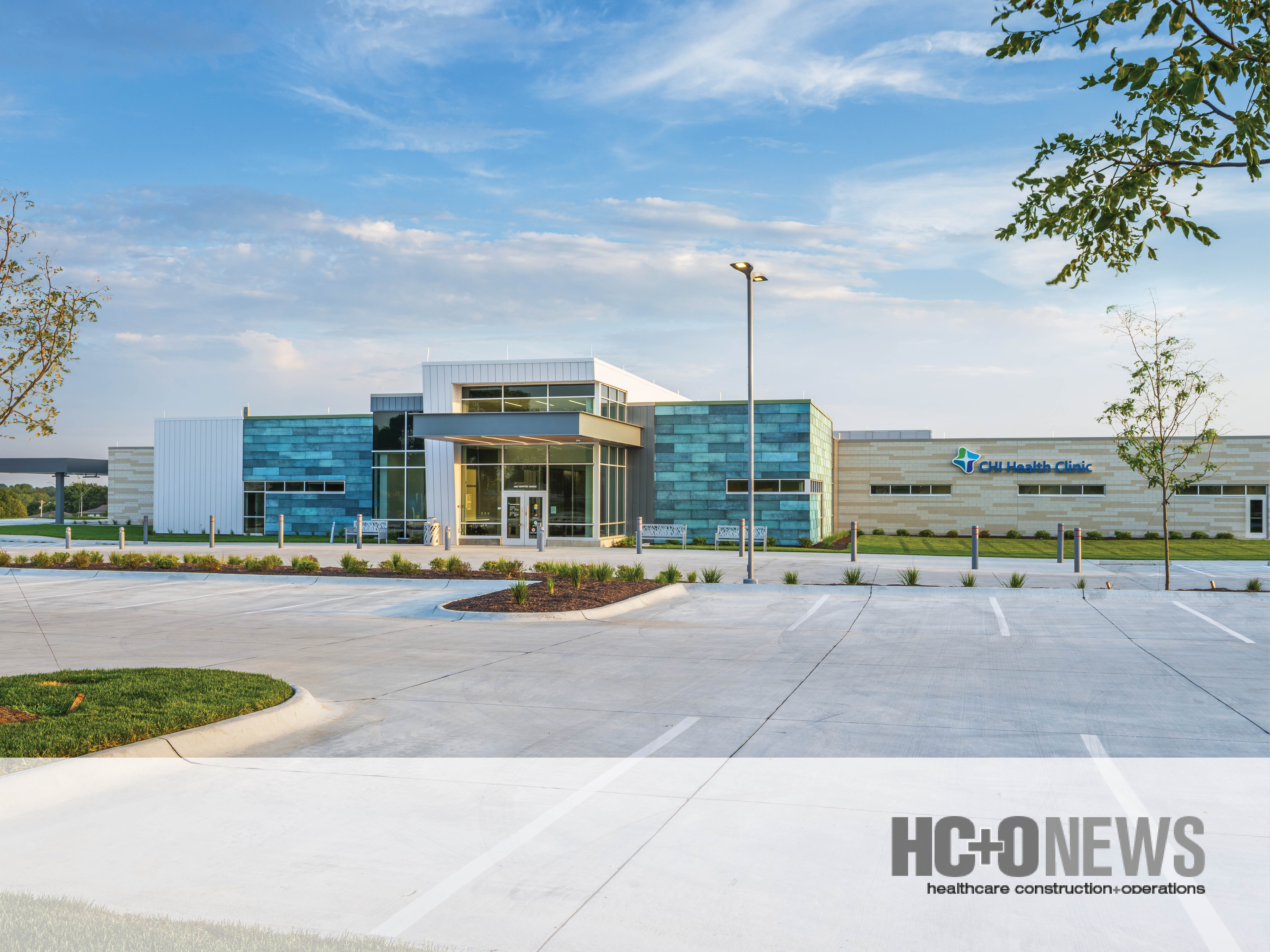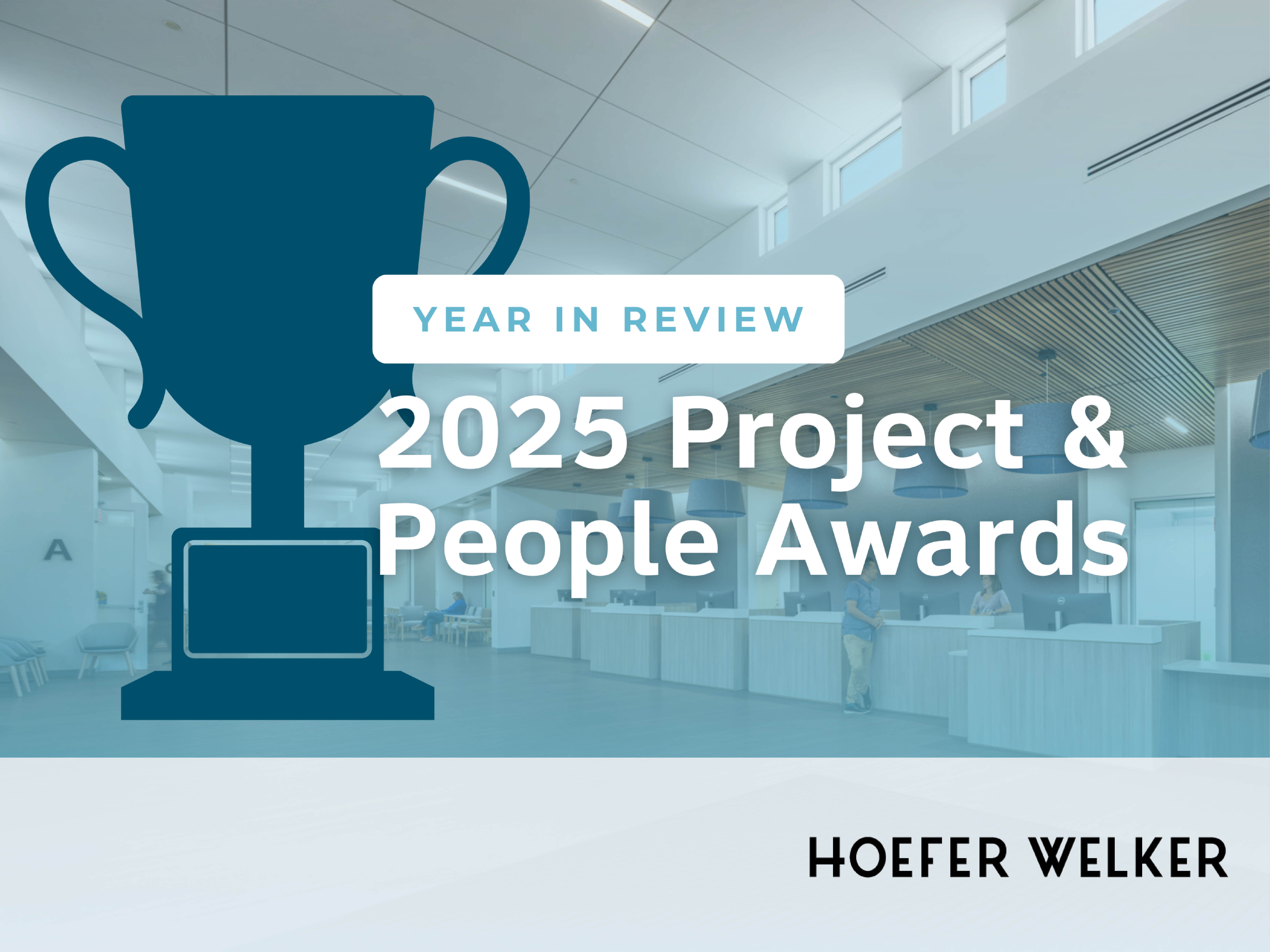Modular and Prefabricated Design Part I: The New Mainstream for Health Systems
A recent HCO News article highlights how modular and prefabricated design is becoming a mainstream solution for healthcare systems facing rising...

There is no one-size-fits-all for sustainable design. However, it is an achievable reality that can be implemented in all types of projects. Hoefer Welker's Green Team leaders are here to guide you through the process and share their best practices for successful sustainable design. With a focus on building performance, environmental footprint and occupant wellness, they invite you into an ongoing dialogue on how these elements can come together to create beneficial and forward-thinking projects. Join us as we explore the possibilities of sustainable design!
Sustainable architecture is a holistic approach that considers the environment, occupant wellness, and resilience to maximize performance. Simply put, it can be considered justified planning that seeks to use energy-efficient materials and techniques, increase occupant well-being, reduce waste, and maximize renewable resources.
Sustainable architecture requires not only an efficient design but also resilience to ever-changing environmental needs. Is a building sustainable if it cannot withstand changing climate, technology, and workforce demands? Matthew Baumann, Hoefer Welker's lead commercial sustainable designer, explains that this means anticipating and reducing carbon emissions for material acquisition, utilizing systems for power generation or reducing mechanical loading, and requiring less water for landscaping. By asking questions early, resilience and environmental measures can be integrated into the design, making them more effective and less intrusive to the design itself.

The significance of occupant wellness in creating sustainable buildings often goes unnoticed. However, research has shown that people spend up to 90% of their time indoors, making the indoor environment a crucial factor in their overall physical and mental well-being. Sarah Gabel, lead sustainability interior designer at Hoefer Welker, believes that creating a comfortable and healing space for occupants entails focusing on key design elements like air quality, acoustics, thermal comfort, and visual comfort. "The interior of a space has dozens of products with different chemical makeups, some that greatly affect occupant wellbeing,” Sarah says. It is also essential for designers to consider the resilience of the material, its environmental impact, color psychology, and acoustic properties, among other things. Studies have shown that proper acoustic treatments can significantly reduce occupant blood pressure and boost productivity. Still, lighting design and finish colors should also be considered to avoid increasing stress levels. The takeaway is that sustainable design in interiors should not just focus on one critical factor like embodied carbon or material health but consider ALL health considerations to create a healthy and environmentally conscious space.

Sustainable design is a smart move for building owners looking to save money. “Sustainable design reduces material and energy waste, which reduces ongoing costs,” notes Parker Hall, lead sustainable mechanical engineer at Hoefer Welker. For example, thoughtful building envelope and massing design lead to decreased mechanical and electrical system sizing. Collaborating to establish sustainability goals early is essential.
“Architects and engineers need to work together as early as possible. Mechanical and electrical systems alone aren't enough to create a sustainable design. A project needs a holistic design to truly be sustainable."
Somesh Tripathi, a sustainability architect at Hoefer Welker, explains that incorporating sustainable design into buildings can provide both environmental and financial benefits. "Sustainable buildings use durable, low-maintenance materials and systems to minimize environmental impact and improve long-term sustainability. The goal is to meet the needs of present and future users, economically and socially, while minimizing negative environmental impact." Material selection can reduce initial construction costs, while low-maintenance materials and systems can save clients money on maintenance over time. Furthermore, tax incentives and rebates are available in many areas, and buyers are often willing to pay a premium for eco-friendly features, increasing the resale value of properties. Considering all these factors, sustainable architecture can provide both short-term and long-term cost savings for clients and provide clients with a high return on investment.
Sustainable architecture can have a tremendous impact on the well-being and productivity of occupants. This is why many organizations are investing in green design to attract and retain employees, as well as reduce stress and anxiety. “Sustainable architecture reduces stress and anxiety by making spaces feel more comfortable. This, in turn, often increases productivity," notes Parker. And people are taking notice: 70% of employees prefer to work for an employer with a meaningful environmental plan. Matthew isn't surprised by this statistic.
“Sustainable architecture, especially in the workplace, empowers people because it enhances their quality of life and provides a powerful reminder that they're positively impacting the world. What’s not to feel empowered about?”

With all the different aspects of sustainability, educating clients is key. “Sustainable or resilient design often means something different for each client. This is why we ask clients questions about how they plan to use the space now and in the future,” says Jeremiah Vick, a lead sustainable healthcare designer. By determining the client’s unique needs and wants, as well as educating them on the potential consequences of certain decisions, there are fewer obstacles to incorporating sustainability.
“The important thing is figuring out how to align sustainability and resiliency measures with the client’s goals, needs, and budget.”
By demystifying sustainable design and emphasizing its many benefits, clients are better equipped to make informed decisions, understand the value of their investment, and effectively communicate their accomplishments to key stakeholders.
Sustainable design empowers owners and employees alike while providing a range of financial benefits. By prioritizing sustainability and understanding clients' unique needs and wants, designers can help them make informed decisions that align with their goals while considering environmental considerations. With its many advantages, sustainable design is an investment worth making.
Want to keep the conversation going? Reach out to Hoefer Welker's sustainability director, Ashley Eusey. We are happy to help you on your sustainability journey!

As a champion of sustainability, Ashley continually raises the bar in regard to performance-driven sustainable design at Hoefer Welker, with direct involvement in most of the firm’s sustainable projects from initial application through final certification. She is currently pursuing LEED v4 as well as LEED v4.1 certification for several projects, keeping Hoefer Welker at the forefront of this new rating system. As a result, she has been invited to present the new v4x requirements at several USGBC events. She is an active member of the USGBC Central Plains chapter and its programming committee. She also has been featured in several industry publications.

A recent HCO News article highlights how modular and prefabricated design is becoming a mainstream solution for healthcare systems facing rising...

2025 brought a number of recognitions for our work, our people, and our growth as a firm. From project awards to individual honors and business...

Mara Sabatini, Vice President and Senior Project Manager, was recently featured in BD+C’s article, Leadership in Practice: How 40 Under 40 Alumni...